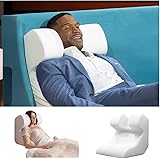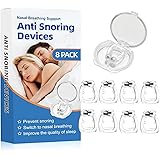Why Don’t Big Brands Use Latex Mattresses More Prominently? Unpacking the Industry Secrets
Have you ever wondered why, despite its many praised benefits, natural latex isn’t the star material in mainstream mattress company lineups? The video above from Mattress Makers delves into this very question, exploring the four primary reasons major brands often steer clear of prominently featuring latex in their mattress designs. While smaller, specialized companies champion the durability, chemical-free nature, and active support of latex mattresses, the bigger players have different priorities and challenges that influence their material choices.
Mainstream mattress companies like Sealy, Simmons, Serta, and Tempur-Pedic do occasionally incorporate latex into some of their models. However, it’s typically used in minimal amounts, often just a thin layer of a half-inch or an inch. This contrasts sharply with specialty latex manufacturers who might use several inches, or even entirely latex cores, in their products. Understanding this disparity is key for anyone navigating the complex world of mattress shopping.
The High Price of Premium Latex Mattresses
Perhaps the most significant barrier preventing big brands from embracing latex mattresses more fully is the cost. Natural latex is simply far more expensive to produce and procure compared to synthetic foams. While a block of polyurethane foam for a mattress might cost around $50, an equivalent block of high-quality natural latex can easily run anywhere from $200 to $300.
This substantial difference stems from several factors. Latex is derived from the sap of rubber trees, which are primarily grown in South America and Southeast Asia, with countries like Sri Lanka being major producers. This means the raw material must be imported, incurring significant shipping costs. Container pricing, for instance, has recently seen almost a double in price, driving up the expense even further. Unlike foam, which can often be produced locally, the global supply chain for latex adds layers of cost and complexity. For mainstream mattress companies that rely on high-volume sales and significant profit margins, incorporating substantial amounts of latex would undeniably price their products out of the competitive market.
The Quest for Proprietary Technology and Branding
Another compelling reason for the limited use of latex mattresses by large corporations lies in marketing and brand differentiation. In the world of mattresses, the ability to create and trademark proprietary materials is a powerful tool for big brands. They can develop and market “air-rated foam,” “fast response foam,” or various “Coolmax” and “Hypergel” infused foams, creating unique selling propositions that are difficult for competitors to replicate directly.
Latex, on the other hand, is essentially just latex. While there are different processing methods like Dunlop and Talalay, the core material remains the same. This makes it challenging for big brands to attach a proprietary name or unique technology to it, which is crucial for their marketing strategies. Some attempts have been made to infuse latex with materials like copper, gel, or graphite. However, such infusions often compromise the very qualities that make latex so appealing in the first place: its inherent durability and natural, chemical-free properties. These alterations can lessen its longevity and diminish its natural appeal, moving it away from the core benefits consumers seek in a natural latex mattress.
Manufacturing Complexities: Foam vs. Latex Production
The manufacturing process itself also plays a critical role in why big brands prefer foam over latex. Foam production is highly efficient for mass scale. Manufacturers can create enormous “buns” or blocks of foam that are then easily sliced and shaped into various mattress components. This allows for rapid, high-volume, and cost-effective batch production, churning out tons of material quickly.
In contrast, latex production is a more labor-intensive and intricate process. Latex is typically poured into individual molds, often in specific dimensions like six-inch blocks. This individual molding process is slower and requires more manual oversight, making it less suitable for the ultra-high-volume, assembly-line production methods favored by mainstream mattress manufacturers. When combined with the challenges of importing these individually produced blocks from overseas, the manufacturing complexities make latex a less attractive option for companies focused on streamlined, high-output operations.
The Broad Spectrum of Comfort in Foam Mattresses
While latex offers a distinct and often highly valued “active support” feel, foam boasts a far wider range of comfort options and unique feels. Because synthetic foams can be manipulated and engineered in countless ways, manufacturers can create an extensive spectrum of firmness levels, densities, and specialized feels—from the deeply conforming hug of memory foam to the quicker response of high-resiliency (HR) foam or the hybrid feel of materials like Hypergel.
This extensive comfort range allows big brands to cater to an incredibly diverse consumer base with highly specific preferences. While latex mattresses offer a good range of comfort, from extra soft to extra firm, its overall “feel” is somewhat consistent across its variations—a buoyant, responsive support. The versatility of foam provides mainstream brands with the ability to offer a vast array of mattresses, each with a subtly different “feel,” enabling them to capture a broader market share through diverse comfort profiles. Even so, the exceptional comfort and unique feel of a quality latex mattress remain a top draw for many discerning shoppers.








